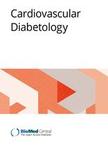版权所有:内蒙古大学图书馆 技术提供:维普资讯• 智图
内蒙古自治区呼和浩特市赛罕区大学西街235号 邮编: 010021

作者机构:Shenzhen Longhua Dist Cent Hosp Dept Geriatr Shenzhen Guangdong Peoples R China Shandong Univ Tradit Chinese Med Dept Cardiol Affiliated Hosp Jinan Shandong Peoples R China Third Hosp Jinan Dept Cardiol Jinan Shandong Peoples R China Jinan Univ Dept Nephrol Affiliated Hosp 1 Guangzhou Guangdong Peoples R China
出 版 物:《CARDIOVASCULAR DIABETOLOGY》 (心血管病与糖尿病)
年 卷 期:2024年第23卷第1期
页 面:163页
核心收录:
学科分类:1002[医学-临床医学] 100201[医学-内科学(含:心血管病、血液病、呼吸系病、消化系病、内分泌与代谢病、肾病、风湿病、传染病)] 10[医学]
基 金:Scientific Research Projects of Medical and Health Institutions of Longhua District
主 题:Sepsis Stress hyperglycemia ratio Critical illness Boruta algorithm Machine learning
摘 要:Background Sepsis is a severe form of systemic inflammatory response syndrome that is caused by infection. Sepsis is characterized by a marked state of stress, which manifests as nonspecific physiological and metabolic changes in response to the disease. Previous studies have indicated that the stress hyperglycemia ratio (SHR) can serve as a reliable predictor of adverse outcomes in various cardiovascular and cerebrovascular diseases. However, there is limited research on the relationship between the SHR and adverse outcomes in patients with infectious diseases, particularly in critically ill patients with sepsis. Therefore, this study aimed to explore the association between the SHR and adverse outcomes in critically ill patients with sepsis. Methods Clinical data from 2312 critically ill patients with sepsis were extracted from the MIMIC-IV (2.2) database. Based on the quartiles of the SHR, the study population was divided into four groups. The primary outcome was 28-day all-cause mortality, and the secondary outcome was in-hospital mortality. The relationship between the SHR and adverse outcomes was explored using restricted cubic splines, Cox proportional hazard regression, and Kaplan-Meier curves. The predictive ability of the SHR was assessed using the Boruta algorithm, and a prediction model was established using machine learning algorithms. Results Data from 2312 patients who were diagnosed with sepsis were analyzed. Restricted cubic splines demonstrated a U-shaped association between the SHR and survival rate, indicating that an increase in the SHR is related to an increased risk of adverse events. A higher SHR was significantly associated with an increased risk of 28-day mortality and in-hospital mortality in patients with sepsis (HR 1, P 0.05) compared to a lower SHR. Boruta feature selection showed that SHR had a higher Z score, and the model built using the rsf algorithm showed the best performance (AUC = 0.8322). Conclusion The SHR exhibited a U-